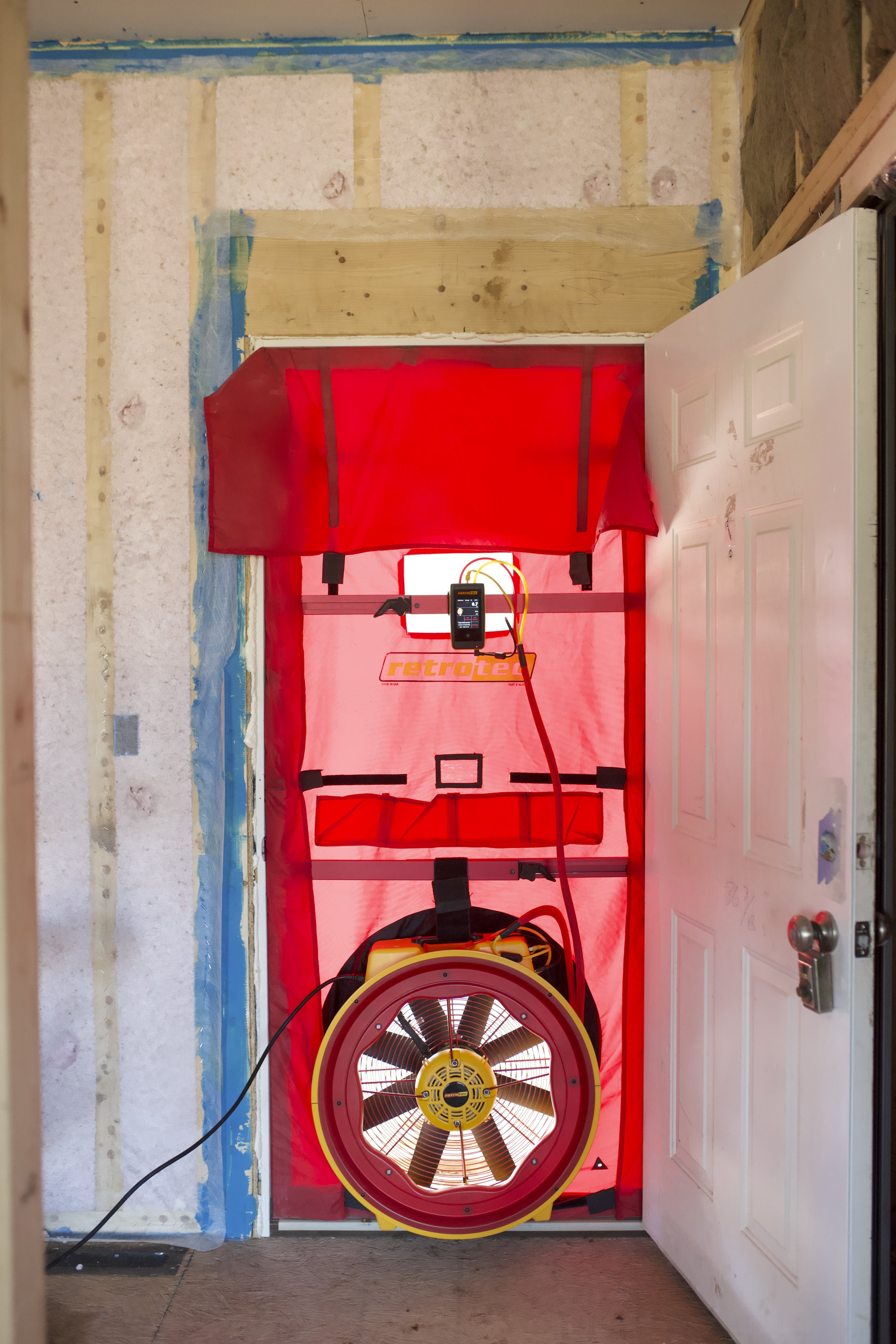How energy testing north carolina boosts your home’s market value and buyer appeal
How energy testing north carolina boosts your home’s market value and buyer appeal
Blog Article
The Role of Energy Testing in Attaining an Airtight Service for Your Residential property
Energy screening is necessary for homeowner seeking to develop a closed setting. It identifies air leakages and ineffectiveness that can endanger energy efficiency. Typical perpetrators consist of spaces around doors and windows. Making use of techniques like blower door examinations and thermal imaging, property owners can obtain insights into their home's vulnerabilities (energy testing north carolina). Recognizing these findings is essential. What steps should be taken when air leaks are recognized? The solutions hold the key to improved comfort and financial savings
Understanding Energy Screening and Its Relevance
Energy screening plays a vital duty in evaluating the airtightness of structures and buildings. By measuring air leakage, this method offers critical insights into a residential or commercial property's energy effectiveness, thermal convenience, and total efficiency. Airtight buildings reduce energy consumption, making sure that cooling and heating systems run successfully. This screening process typically includes methods such as blower door tests, which produce a regulated setting to recognize unintended air pathways.Understanding the significance of power screening expands past conformity with building regulations; it fosters a proactive approach to sustainability. Identifying air leakages early can cause prompt removal, eventually improving indoor air high quality and lowering energy expenses. Furthermore, power screening adds to the long life of building materials by lessening moisture accumulation and relevant damages. As recognition of ecological influence boosts, energy screening comes to be a vital tool for home owners and contractors going for high-performance residential or commercial properties.
Common Resources of Air Leaks in Residence
Recognizing typical resources of air leakages is crucial for enhancing a residential property's energy performance. These leakages typically take place in numerous areas of a structure, significantly affecting home heating and cooling prices. Usual perpetrators include spaces around doors and windows, where seals may deteriorate gradually. Additionally, electric outlets and switches can create paths for air exchange otherwise effectively insulated. Attic rooms and cellars are additionally frequent resources, particularly where wall surfaces meet the roofing system or the structure. Various other possible leak factors include plumbing infiltrations, airing vent systems, and the locations bordering chimneys. Older residential or commercial properties may experience from weakened building materials, boosting susceptability to air seepage. By recognizing these typical resources, homeowner can take proactive steps to secure leakages, therefore boosting overall power performance and convenience within their spaces. Attending to these issues is an essential part of establishing an airtight remedy for any residential property.
Approaches of Power Testing: Blower Door and Thermal Imaging
Efficient power testing techniques, such as blower door tests and thermal imaging, play a necessary duty in detecting air leakages within a property. The blower door test includes pressurizing or depressurizing a structure to measure airflow and identify leakages. A calibrated fan is mounted in an outside entrance, and the resulting stress distinction highlights areas of undesirable air seepage. This method measures the overall airtightness of the structure.Thermal imaging enhances blower door examinations by visually discovering temperature level variants on surfaces, exposing covert air leaks. Infrared electronic cameras record warmth loss or gain, enabling precise recognition of issue areas, such as inadequately insulated wall surfaces or spaces around windows and doors. energy testing north carolina. Together, these techniques provide a comprehensive analysis of a residential property's power performance, allowing home proprietors to attend to air leakages efficiently and boost overall efficiency
Benefits of Identifying Air Leaks
Recognizing air leaks uses significant advantages for power efficiency and interior comfort. By securing these leaks, structures can reduce energy consumption, leading to lower energy costs and a minimized carbon footprint. In addition, enhanced airtightness adds to an extra stable indoor environment, enhancing total comfort for residents.
Energy Effectiveness Improvements
Detecting air leaks is crucial for improving power efficiency in buildings. Recognizing these leakages permits building owners to deal with areas where conditioned air gets away or unconditioned air enters, causing substantial power savings. By sealing spaces and splits, buildings can maintain a constant temperature level, minimizing the demand on heating and cooling systems. This not only reduces energy expenses however additionally minimizes the environmental effect connected with increased power intake. Furthermore, power performance renovations add to a building's total sustainability, making it a more attractive alternative for eco-conscious customers or renters. Inevitably, focusing on air leak detection and remediation helps enhance energy usage, advertises liable source monitoring, and supports long-lasting financial advantages for residential or commercial property owners.

Boosted Indoor Comfort
Dealing with air leakages not just causes energy financial savings but likewise substantially improves interior convenience. When air leakages are properly recognized and sealed, temperature guideline within a residential or commercial property ends up being a lot more efficient. This leads to constant indoor temperatures, eliminating chilly drafts in wintertime and warm places in summer season. Improved insulation also reduces sound pollution from outside, developing a quieter and even more peaceful living setting. In addition, enhanced air quality is achieved by read more reducing the infiltration of outdoor pollutants, allergens, and humidity, contributing to the overall well-being of residents. As a result, house owners experience an even more pleasurable environment, promoting leisure and efficiency. Eventually, rectifying and identifying air leakages is vital for achieving ideal indoor comfort throughout the year.
Exactly How Power Screening Improves Convenience and Indoor Air High Quality
Power screening plays a vital role in improving temperature law within interior spaces, making certain a comfortable and consistent setting. By identifying and securing air leaks, it likewise substantially lowers the seepage of pollutants, consequently improving interior air top quality. This double influence promotes overall health for passengers.
Enhanced Temperature Level Regulation
Efficient temperature level guideline significantly adds to both comfort and indoor air top quality, making it a vital focus for modern-day building style. Energy screening plays a crucial function in attaining this regulation by determining locations where heat loss or gain happens, enabling targeted improvements. By making sure an impermeable building envelope, energy testing assists keep consistent interior temperature levels, reducing the need for extreme home heating or air conditioning. This security improves resident comfort, as variations in temperature level can result in pain and frustration. In addition, effective temperature control can improve indoor air high quality by minimizing the risk of condensation and mold growth, which flourish in unequal temperature problems. Therefore, energy testing is vital for optimizing temperature level management in domestic and commercial buildings.
Minimized Toxin Infiltration
While lots of variables add to interior air high quality, decreased contaminant infiltration sticks out as a vital facet that power testing can considerably enhance. Energy testing determines air leaks and powerlessness in a structure's envelope, which may permit outdoor pollutants, irritants, and moisture to go into indoor rooms. By securing these leakages, buildings can efficiently restrict air-borne impurities, resulting in a much healthier setting. Boosted airtightness not just enhances comfort yet additionally minimizes the worry on home heating and cooling systems, resulting in energy savings. In addition, minimized pollutant infiltration fosters better total health for residents, as cleaner air promotes respiratory health and decreases allergy signs. Energy testing plays a critical role in producing both a health-conscious and energy-efficient living room.
The Financial Effect of Energy Testing on Energy Costs

Actions to Take After Power Testing Outcomes
As soon as energy screening results are in, property owners should meticulously examine the searchings for to determine the most efficient course forward. The initial step entails determining the areas that require renovation, such as air leakages or insulation shortages. Home owners should then focus on repair work based upon the seriousness of the problems and their possible influence advice on energy efficiency.Next, it is advisable to seek advice from professionals that specialize in power effectiveness to develop a detailed activity plan. This may include solutions like securing gaps, adding insulation, or updating home windows and doors.After applying the needed changes, a follow-up energy examination can identify the performance of the fixings. Constant surveillance is also important to ensure that the building keeps its closed standing with time. By adhering to these actions, property owners can considerably improve their building's power efficiency, causing decreased energy costs and enhanced convenience.
Regularly Asked Inquiries
Exactly how Typically Should I Conduct Energy Checking on My Building?
The frequency of energy testing ought to generally be every couple of years, or adhering to substantial restorations. Normal assessments help recognize efficiency improvements and ensure that the residential property keeps suitable power performance over time, adapting to transforming problems.
Is Power Screening Necessary for New Constructions?
Power screening is necessary for brand-new constructions, as it identifies possible air leakage and insulation issues - energy testing taylors sc. Applying these tests warranties power performance, boosts interior comfort, and satisfies building ordinance, inevitably leading to long-lasting expense savings
Can I Do Energy Screening Myself?
Power testing typically needs specific equipment and expertise. While some house owners might attempt standard evaluations, specialist solutions ensure accurate results and efficient identification of problems, ultimately resulting in far better power effectiveness and convenience in living spaces.
What Is the Expense of Expert Power Screening Solutions?
The cost of specialist power screening services commonly ranges from $300 to $1,500, depending upon property intricacy, place, and size. Homeowners should think about possible energy cost savings when reviewing the investment in these solutions.
Just How Long Do Power Testing Outcomes Generally Last?
Energy screening results usually remain legitimate for one to three years, relying on variables like building adjustments and ecological adjustments. Normal updates are advised to guarantee precision and maintain effective energy effectiveness requirements. Reliable energy testing techniques, such as blower door tests and thermal imaging, play an essential role in detecting air leakages within a residential or commercial property. Recognizing these leaks enables residential or commercial property proprietors to resolve areas where conditioned air leaves or unconditioned air enters, leading to significant energy savings. Energy testing determines air leaks and weak factors in a building's envelope, which might allow outside contaminants, irritants, and wetness to go into interior rooms. As property owners progressively seek to minimize their power expenditures, the role of energy testing ends up being essential in identifying ineffectiveness and leakages. Property owners must after that focus on fixings based on the severity of the issues and their prospective impact on power efficiency.Next, it is a good idea to seek advice from with professionals who specialize in energy effectiveness to design a thorough activity strategy.
Report this page